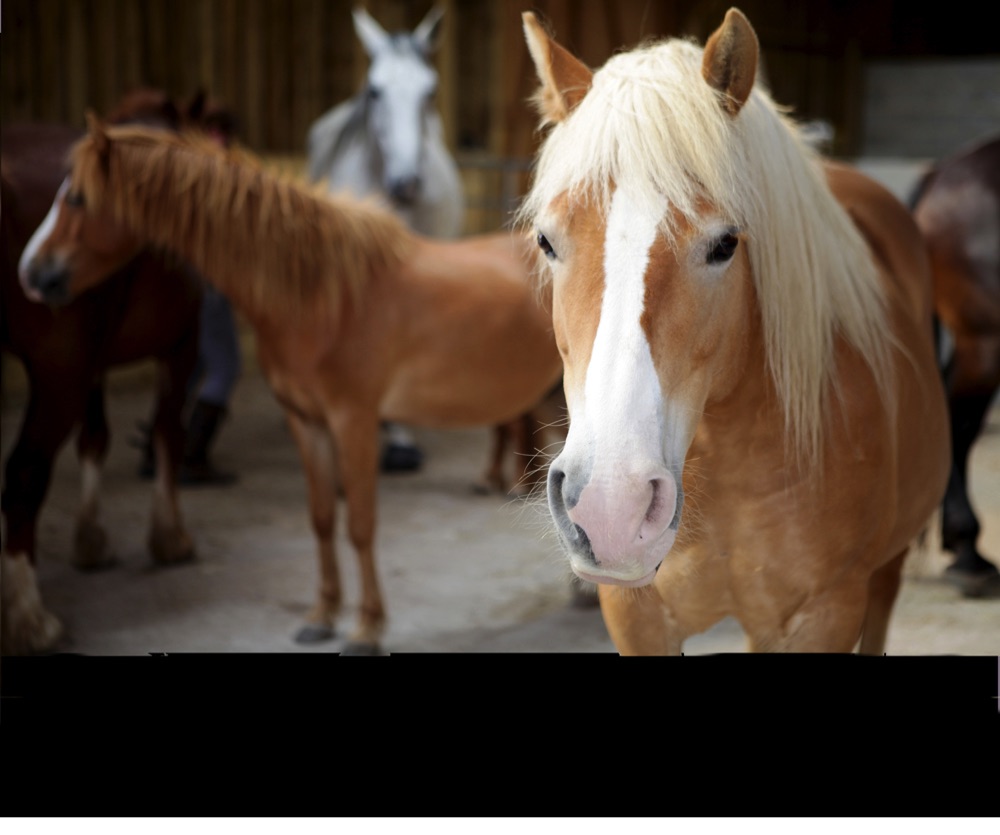
Frequently asked Questions

Contact info
07789 404055
Lauren Hetherington copyright 2016
FAQ's
If the horses don't eat grass, what do they eat?
Forage is a big part of the day to day management of the horses here. Horses need to eat between 1.5-4% of their body weight in fibre a day and to achieve that we provide ad-lib hay.
The field in the middle of the track is used for our hay crop. We planted the grasses from scratch so that we knew exactly what is in there to provide a crop that is low sugar and starch but also nutritious enough to feed all year round. The main grasses are Yorkshire Fog, Cocksfoot, Timothy, Meadow and Wild Oat. These were chosen as they establish well and produce a good crop. We will be over sowing with further mixes as the years go on. We do not use any 'chemical' fertilisers or treatments on our hay. Any excess hay is sourced locally from suppliers who we work closely with so we know exactly how it has been grown and can ensure the quality of the hay.
If you feed mainly hay, it is a good idea to have it analysed to make sure it is low sugar/starch as this will be of most benefit to your horse's health. We have our hay analysed and feed minerals that may be lacking. We also allow the horses access to a range of hedgerow, herbs, flowers and plants to provide essential nutrients.
Why don't you feed grass?
One of the main features of keeping horses on a track system is being able to provide ad-lib forage as an alternative to grass. Horses have evolved to eat a sparse and very fibrous diet of low sugar grasses. Most of our modern pastures are full of grass which is often too rich in sugars, the levels of which can vary wildly on a day to day basis depending on weather conditions and stresses on the land.
Rye grass is one of the most common and also one of the most damaging grasses, it has been planted historically to provide a very high sugar grass for dairy cattle and has since been provided as grazing for horses that is hard wearing and fast growing. Unfortunately the payoff is high sugar intake leading to inflammation within the body and, ultimately, the hooves causing anything from low grade laminitis to an acute attack.
Will horses overeat if allowed ad-lib hay?
The majority of horses with access to ad-lib hay will learn to self-regulate their intake. The access to constant, trickle fed, forage will help to stabilise blood sugar and decrease symptoms of certain metabolic issues. The enrichment of living in a herd also offers distraction from constant eating and horses will start to spend more time playing, grooming and resting with the group.
There are some horses that may not be able to self regulate, even with forage provided in slow feeders and they may need extra support from plant or chemical based therapeutic treatment.
Will this system cure my horse's laminitis?
Laminitis is a symptom of inflammation within the body of the horse predominantly brought on by inappropriate diet. The way in which horses are managed on a track system will greatly reduce the risk of any dietary induced laminitis. The increased stimulation to the hoof and musculature of the body through movement will also help to create a stronger and more resilient hoof.
There are still other potential triggers for laminitis such as illness, medication or routine treatments such as wormers and vaccinations but overall, the risks are greatly reduced.
Will a track system suit all horses?
Because the lifestyle provided to a horse on a track system more closely replicates that of a wild horse than many traditional set ups, we have found that most horses adapt readily to living this way. Evolutionarily speaking, horses DNA remains largely unchanged from those of their wild counterparts so they have the same psychological and physiological needs. This system looks to meet as many of these needs as possible.
There are occasionally horses that have become aggressive or shut down from their previous experiences who may not adapt so readily. With slow and low stress introductions to the system, many will gain in confidence and start to revert to normal behaviour, but, of course, it is not a given that all will be able to be rehabilitated 100%.
Do horses always get on in a herd together?
In all horse herds there are those who bond more closely and those who remain just acquaintances. As discussed in the previous answer, some horses may be so psychologically compromised that they are unable to live in close proximity to other horses, at least while they are acclimatising to the system. All horses at Graveney Natural Track Livery will be introduced on a trial basis to maximise the welfare and safety of the established herd.
Does it get muddy?
Mud is often much more of an issue for us as caregivers than it is to horses.
We have placed surfaces all the way around our track so that mud is not an issue here at Graveney Natural Track Livery. Because we have a variety of surfaces the horses have a choice of terrain dependant on their current comfort levels.
Will my horse become herd bound?
Obviously, every horse's previous training and learned experiences will affect how they behave when taken away from herd mates. We have found that most horses experience a rise in their own personal confidence and a reduction in stress levels from living in this way and being able to bond with us as caregivers. So, on the contrary, we find they are more open to investigating novelty, trusting humans and far less agitated when taken away from the group.


